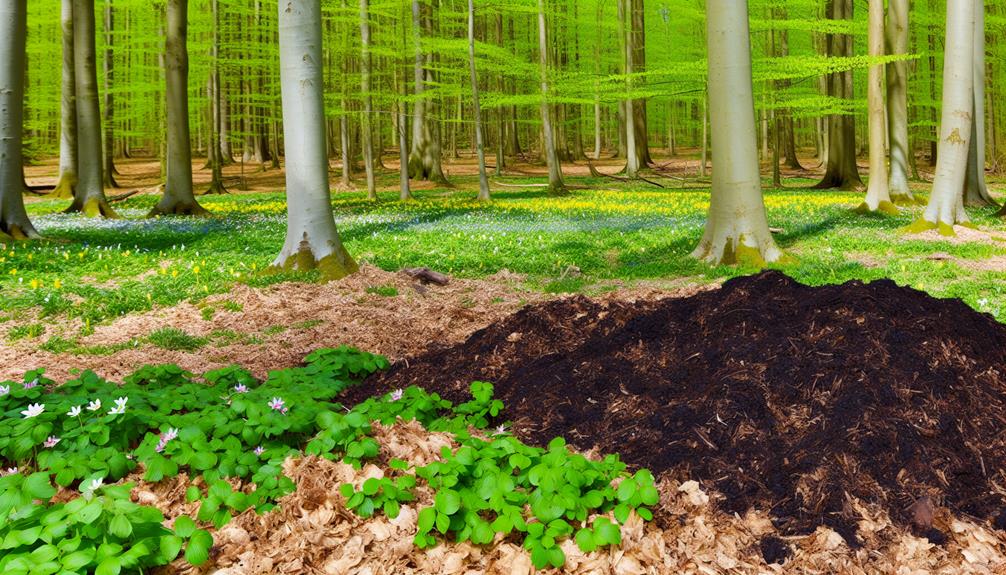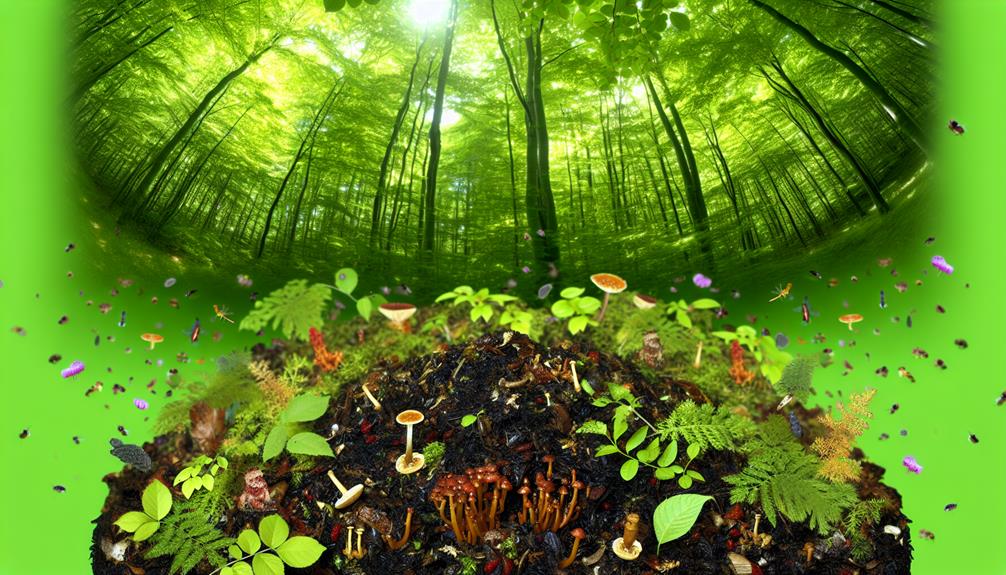

Yes, you can compost a cadaver through a process called human composting, which transforms human remains into nutrient-rich soil. This method places the body in a vessel with organic materials, encouraging natural decomposition. It’s an eco-friendly choice, reducing carbon emissions and enriching soil with essential nutrients for plant growth.
Legalities vary, so you need to check local laws, as some regions, like a few US states, have already legalized it. Human composting honors loved ones in a meaningful way and supports environmental sustainability. Intrigued? There’s still so much more to discover about this fascinating process!
Human composting, also known as natural organic reduction, transforms human remains into nutrient-rich soil through a controlled, eco-friendly process. Imagine contributing to the health of the planet even after you’re gone.
This concept allows you to return to the earth, nourishing the soil and promoting new life. By choosing human composting, you’re making a statement about your values, showing a commitment to sustainability and the environment.
This method connects you to a growing community of eco-conscious individuals who believe in reducing waste and giving back to nature. It’s a meaningful, respectful way to honor loved ones, ensuring they continue to have a positive impact on the world.
Embrace this idea and join a movement that celebrates life in a truly sustainable way.
You might be curious about how human composting actually works, so let’s break it down.
The process involves placing a body in a specialized container with organic materials, like wood chips and straw, to encourage natural decomposition.
Not only does this method transform remains into nutrient-rich soil, but it also offers significant environmental benefits by reducing carbon emissions and conserving land.
The process of human composting transforms a body into nutrient-rich soil through a carefully monitored, environmentally-friendly procedure. You begin by placing the body in a vessel filled with organic materials like wood chips, straw, and alfalfa. Over several weeks, the controlled environment encourages microbial activity, breaking down the body naturally.
Temperature and moisture levels are constantly supervised to guarantee complete decomposition. After about 30 days, the remains are moved to a curing phase for a few weeks, where they turn into usable soil.
Here’s a quick overview:
| Step | Description |
|---|---|
| Initial Setup | Body placed in vessel with organic materials |
| Decomposition | Microbial activity breaks down the body |
| Monitoring | Supervise temperature and moisture continuously |
| Curing Phase | Remains transferred to curing area for final conversion |
Unlike traditional burial or cremation, composting cadavers greatly reduces carbon emissions and conserves natural resources. When you choose human composting, you’re embracing an eco-friendly process that transforms your remains into nutrient-rich soil, enhancing the earth rather than depleting it.
This method involves placing the body in a vessel with organic materials like wood chips and straw, allowing microbes to break down the remains over several weeks. The result is a rich, earthy compost that can nourish plants and trees, creating a lasting, positive impact on the environment.
Also Read: Can You Compost Alfalfa Sprouts?
You’ll be amazed at how composting cadavers can enrich soil with essential nutrients. This practice greatly reduces our carbon footprint and vastly improves waste management.

Imagine transforming lifeless remains into a rich, fertile substance that benefits the environment. By choosing human composting, you’re participating in a sustainable practice that truly makes a difference.
Composting cadavers enhances soil nutrient levels by recycling essential minerals and organic matter back into the earth. You’re fundamentally giving back to nature, creating a cycle of life that’s both respectful and beneficial.
When you compost a cadaver, you’re enriching the soil with crucial nutrients like nitrogen, phosphorus, and potassium. These elements foster healthy plant growth, making your garden or local green spaces flourish.
Imagine a community where the soil is rich and fertile, supporting vibrant plant life and promoting a healthy ecosystem. By participating in this process, you’re not just helping the environment; you’re building connections with others who value sustainability.
It’s a way to turn loss into something profoundly life-affirming.
Beyond enriching soil, turning cadavers into compost also significantly reduces the carbon footprint associated with traditional burial and cremation practices. By choosing this method, you help lower greenhouse gas emissions and conserve valuable resources.
Imagine the difference you can make:
By transforming cadavers into compost, you greatly enhance waste management practices and contribute to environmental sustainability. Traditional burial and cremation methods can be resource-intensive and environmentally harmful. Composting cadavers, however, turns human remains into nutrient-rich soil, reducing the need for chemical fertilizers that harm ecosystems. This method not only decreases landfill waste but also promotes healthier soil and plant growth.
You become part of a community dedicated to reducing waste and nurturing the planet. By choosing composting, you support innovative, eco-friendly practices that resonate with shared values of sustainability. Together, we can shift towards more responsible waste management, ensuring that even in death, we contribute positively to the earth.
This collective effort fosters a sense of unity and purpose.
Also Read: Can You Compost Bag?
When considering the ethical implications of composting cadavers, one must weigh the respect for the deceased against the environmental benefits. You might wonder how to balance these significant factors. Here are some points to visualize:
The legal status of composting cadavers varies widely across different countries and regions. In the United States, states like Washington have legalized human composting, making them pioneers in this eco-friendly approach. However, many other states haven’t yet adopted such legislation.

In contrast, countries like Sweden and the Netherlands are exploring similar options, reflecting a growing global interest.
If you’re considering this sustainable method, it’s essential to know the local laws. Some places may have strict regulations, while others are more flexible. Being informed guarantees you can make choices that align with both your values and legal requirements.
Also Read: Can You Compost Apple Skin?
Looking ahead, human composting promises to revolutionize how we approach death and environmental sustainability. By transforming our remains into nutrient-rich soil, we can give back to the Earth and foster a sense of community.
Imagine your loved ones contributing to lush gardens, vibrant forests, and thriving ecosystems. Human composting could become a beautiful way to honor life and nurture future generations.
This approach combines respect for the deceased with a commitment to a sustainable future.
You’re now equipped with a deeper understanding of human composting and its potential benefits for our planet. By embracing this innovative method, you can contribute to a more sustainable future.
Imagine turning human remains into rich soil that nurtures new life, reducing environmental impact, and offering a meaningful alternative to traditional burial or cremation.
As you consider the ethical and legal aspects, remember that human composting is a powerful step toward a greener, more compassionate world.
